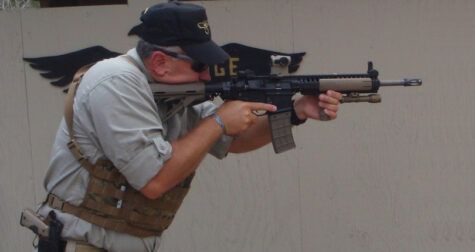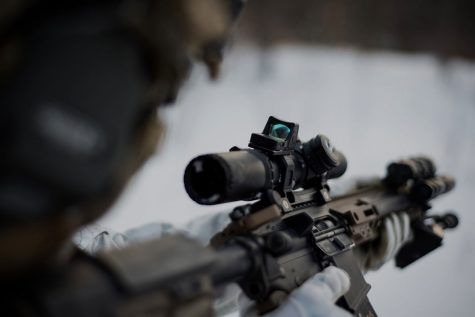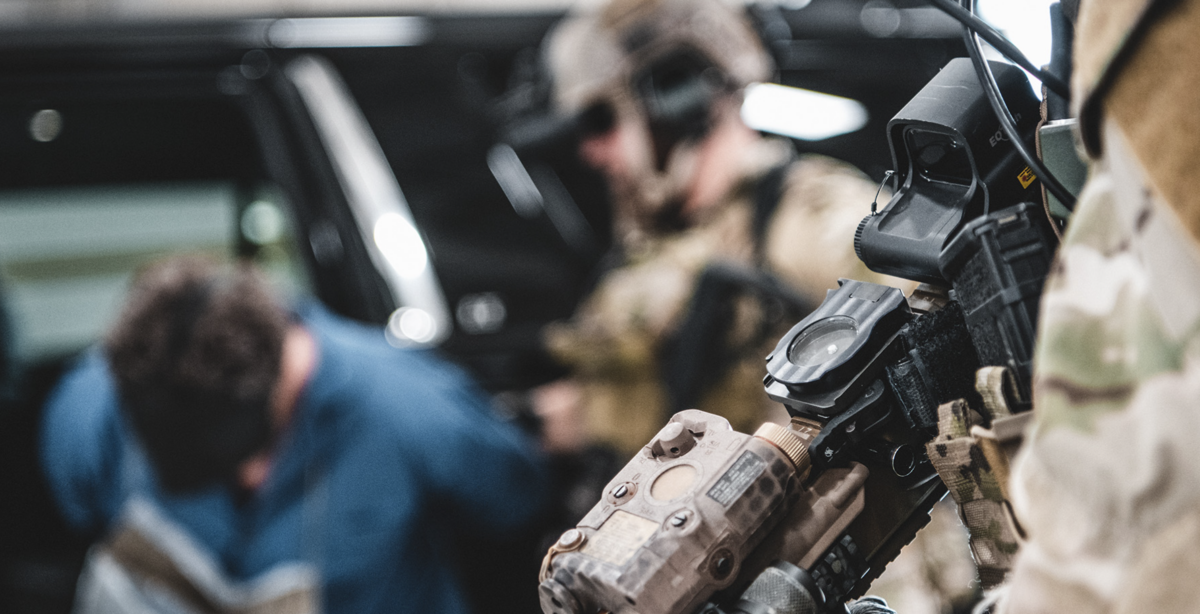
After seeing a photo of a TacomHQ Alpha TARAC on a rifle and not knowing exactly what it was, we decided to reach out to the company that makes it to learn more. John Baker, owner, and founder of TacomHQ discusses just what the Alpha TARAC is, and why it might make sense to pair one with your red dot optic or LPVO.
Q: John, thanks for taking the time to chat about the Alpha TARAC. Can we start with a bit about your company?
John Baker, TacomHQ – We started the company in 2013. It was more of a challenge from my son. I had just left a company as a part-owner and my son said, “Dad, you’ve always had all these great ideas; why don’t you do something?” That started me down the road. My background is manufacturing – glass, silicone, quartz…very high-end stuff.
So, I started my own company, and the first product we did was the Armor Optic, which was a total flop at the time. (laughs). My God, did we take it on the nose from folks online. It was a disaster.
Q: Can you talk a bit about that first product?
John Baker, TacomHQ – The original thought on that product was that I had seen so many scopes take an impact that lead to a failure. Sometimes a scope could take a tremendous amount of damage and keep on working, but other times, a little ding could stop it. If the scope isn’t functioning, your ability to hit your target disappears. As we started doing research, we came to the conclusion that it wasn’t so much the scope that we were trying to protect, it was the scope’s point of impact.
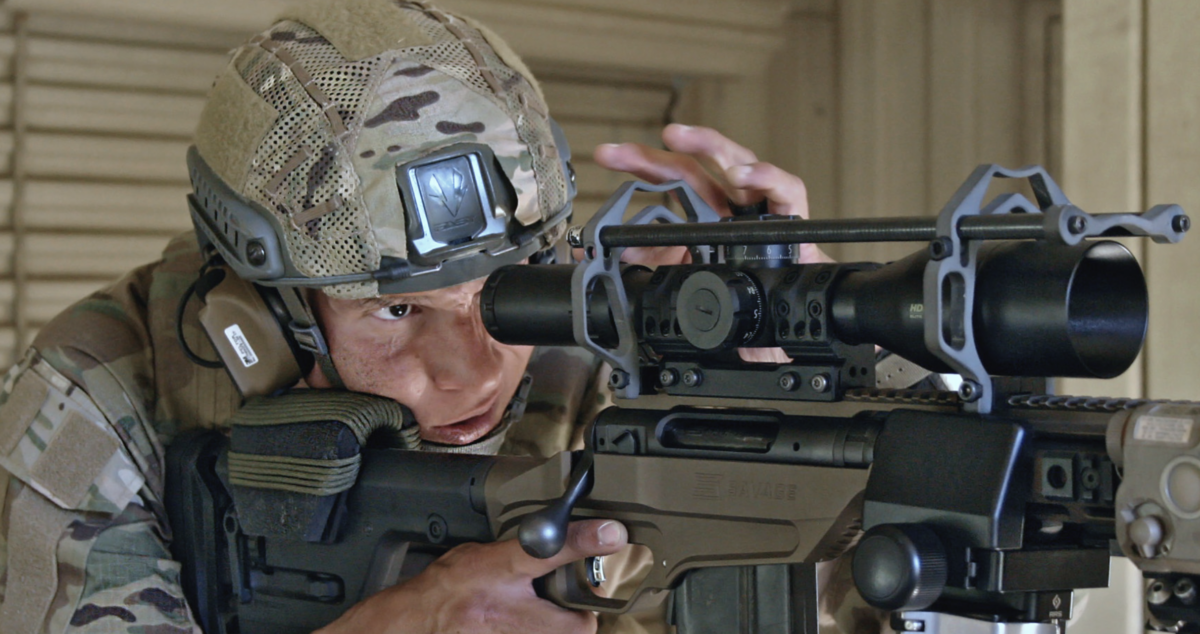
What we found was that a hard G hit would often times simply move the scope. Rings would deform, Picatinny rails would deform. Things would move. Screws would break loose…if you can’t hit what you’re aiming at because something has moved, well, that’s just a disaster. We developed a system where you could drop the scoped rifle multiple times upside down on hard concrete from chest height, and it would hold the same point of impact. The thought was that this would be beneficial for those in law enforcement and the military.
After that product, we moved on to optics. I had wanted to shoot further than what the current optics could do. Back in 2001, I made my first sloped rails, and I quickly ran out of room. Back then, scopes had 60, 80 MOA. You could run out of range in a big hurry. So, I was looking for a way to extend that range. I started looking at prisms, which were a piece of glass that you would look through. That’s what our Alpha TARAC is. Later on, we started making a Charlie TARAC, which uses a mirror instead of a prism.
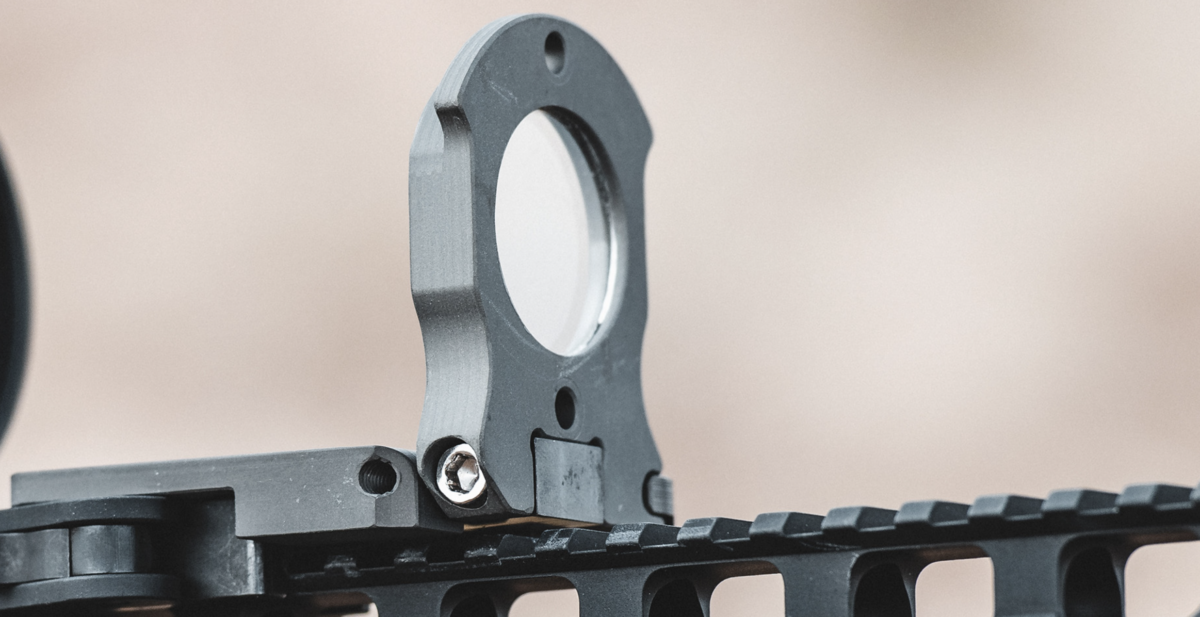
Q: What would necessitate you to have a mirror vs. a prism?
John Baker, TacomHQ – The problem with prism units is they are not chromatically adjusted for. During development, it’s very expensive to get the first prisms in place. It’s costly to find out you’ve made a mistake with the math, and you have to start over again. It’s nothing to pay $1,000 per prism to do a test, and you need two minimum to do a test. Remember, you have to be able to hit a certain level of precision with these.
So, the first ones we did, we recognized quickly that they worked wonderfully for the AR, which we’ll talk more about momentarily, but we also realized that some would want to use something like this at longer ranges at higher magnification.
We got involved with a military supplier, and our first goal was a 10 Mil adjustment, then 20, then 30. Requirements were changing by the week and going uphill. When we hit 30, we had our first order with a well-known Special Forces group. Within that order, they wanted 30, 50, 70…at that point, we couldn’t buy enough prisms to do enough testing. So, we developed the Charlie TARAC, which is a mirrored version instead of a prism version. It allows huge movements upwards of 600+ MOA. The newest one we are working on will be capable of 2,400 MOA.
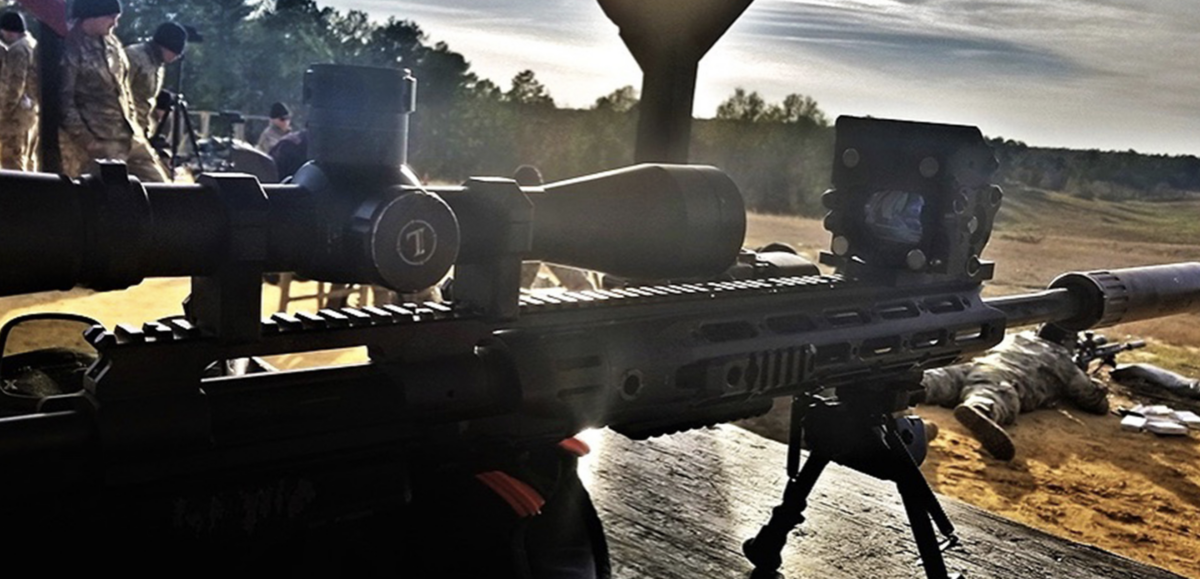
What’s unique about both the prism-based Alpha TARAC and our mirror-based Charlie TARAC is that we are not moving a reticle, or moving an image inside of the scope. Rather, we are moving the world outside of the scope or outside of the red dot to a different point. You move the world, and therefore the reference of your rifle to that new world has now changed.
The huge advantage of that, using the AR as an example, is that if I am on a course and I am shooting a steel target, well, that’s one level of pressure. Now, put a clock on someone. I can’t tell you how many times I’ve seen just that small bit of additional pressure impact a shooter’s performance. They can become forgetful. When pressure hits, it’s almost like we revert to a lizard brain. Our device allows us to be a lizard…to be as simple as possible.
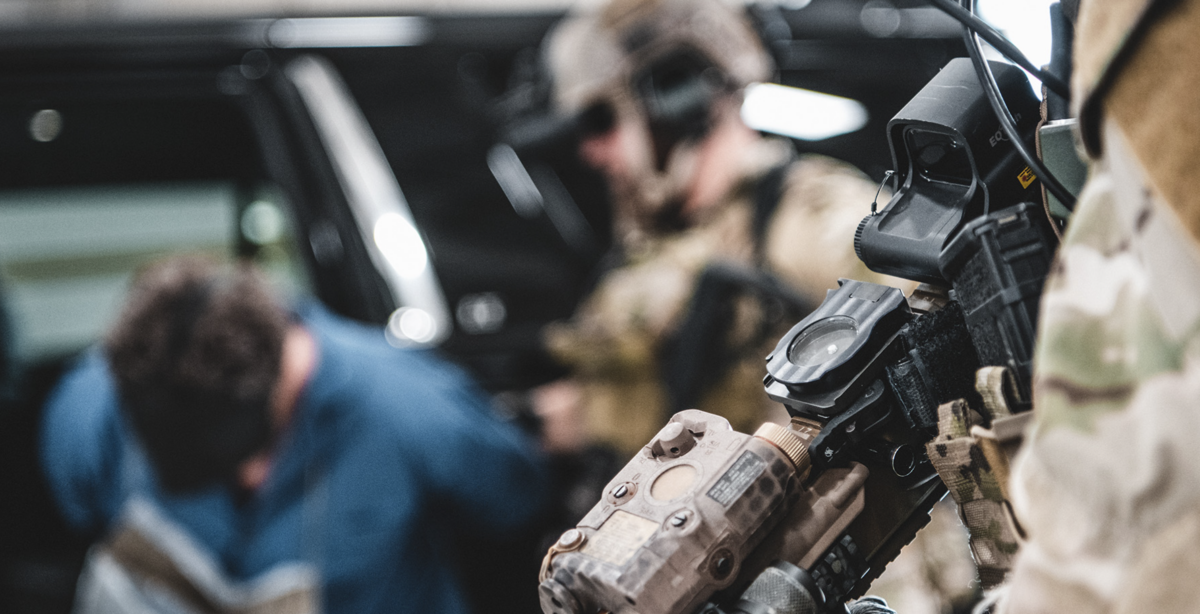
We can hand someone a rifle with a 50/200 yard zero, then tell them their next point of impact will be at 400 yards or 500 yards, and they can make those hits easily.
You can go from a CQB situation to one where someone is shooting at you from blocks away…well, now you can target them very precisely and take them out. Training-wise, you might just be trained with a red-dot to shoot at 100 yards, but if the target is now at 500 yards, all you need to do is flip up the Alpha TARAC, and everything you did at 100 yards now applies at 500 yards. I don’t need to know ballistics. All I really need to do is put the dot on the guy and pull the trigger. As long as I know that I’ll shoot without it out to about 200 yards, and if it looks farther than that, I’ll flip up the Alpha TARAC and go.
The simplicity is such, and we have proven again and again that we can take a person that has never shot past 100 yards or someone who has literally never shot a gun and have them make 500-yard hits in literally a minute’s time. You can take a new recruit and very quickly have them be effective at 500 yards. They flip it up and engage the target.
Q: This seems like something that’s not for everyone, but might be nice for a specific group of shooters?
John Baker, TacomHQ – Put this way – if everything has gone bad and I need to engage, I really want to minimize my exposure to the threat that is looming out there at a distance. If it takes me five shots to hit a guy, that means I’ve had to expose myself five times. However, if it only takes two shots or one to do the same thing, that means I’ve reduced my exposure time between 60 and 80 percent. That’s huge value to someone. To be clear, at those ranges, you may not be trying to shoot the guy in the eye. Instead, can I make the guy stop doing whatever it is he was doing?
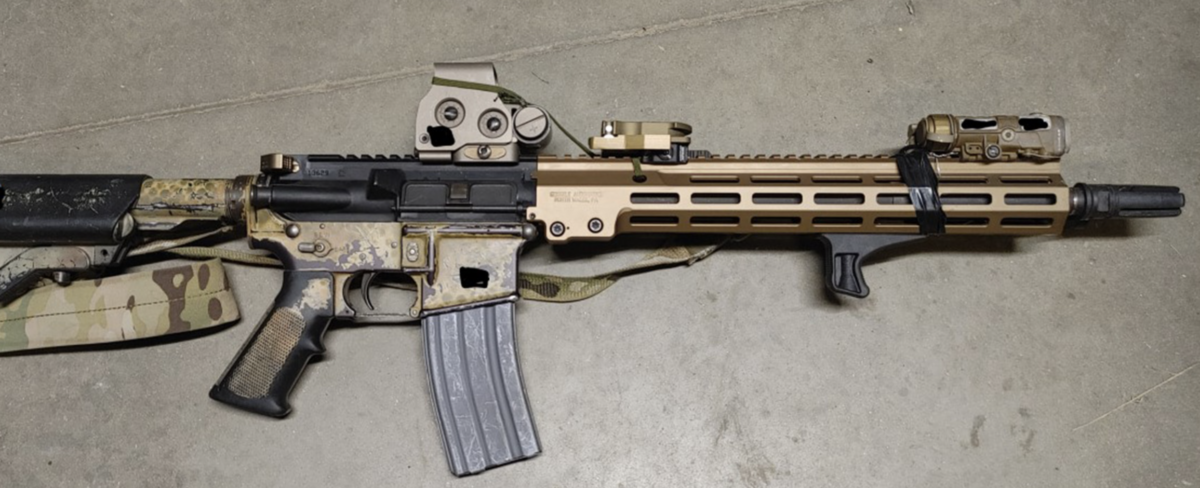
If you take a shot and miss someone by 40 feet, well, chances are they’re going to look at that and shoot back. That’s a problem. With the TARAC, that’s not going to happen. You can be pretty sure that even if you don’t hit him with that first shot, he’s going to stop what he’s doing. Our simple optic allows this.
Another thing, because we are moving the world versus the optic itself, the TARAC does not care what is behind it. It does not care if it’s a red dot, ACOG, holographic optic, or an LPVO. It does not care…and it still works so well. I can tell you that this device is now all over…it has seen use in the field, and the feedback is that it works very well.
Those that think they don’t need it find that it just works, and it makes even the best shooters faster. That’s because you’re not in that thinking mode. You’re not thinking, “my target is 500 yards away, and I am shooting a 62-grain bullet at 3,200 feet per second, my hold is 55 inches above this guy’s head.” You don’t have to think about any of that. It’s as simple as “put the dot on them and pull the trigger.”
Q: I grasp why this might be nice in front of an Aimpoint T2, but say I have a 1-6 LPVO, you can still use it at whatever magnification you want. You just don’t worry about holdovers?
John Baker, TacomHQ – That’s correct, and in fact, one of the favorite combinations of guys that have done the testing is using the Alpha TARAC with an LPVO. It’s so flexible and just so, so fast. From a pure speed standpoint, you just cannot beat it. Again, this is not a situation where I’m on a bench rest looking to shoot my bullets through a single hole. I’m looking to hit a body-sized target as rapidly as possible, with as little thought as possible.
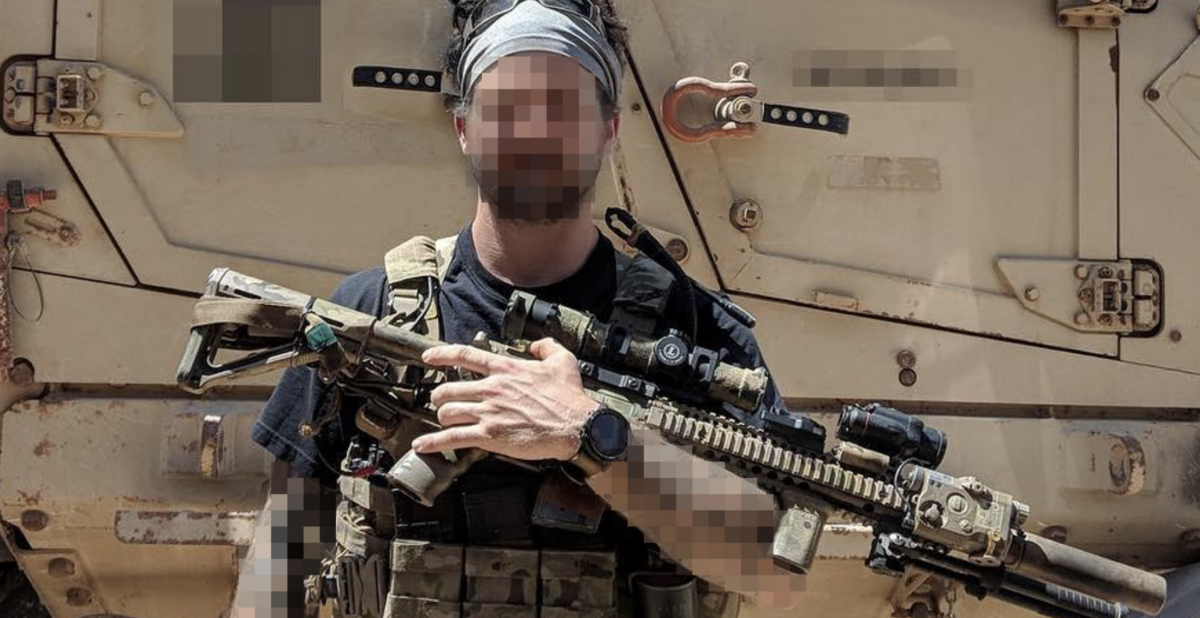
Also, it’s worth noting for your readers that a good LPVO is expensive. It can be two, three thousand dollars or more. But what we find is that you take someone with an Alpha TARAC and a red dot, they are nearly or as effective as someone with an LPVO at hitting a known target.
Imagine this – let’s say I have ten guys. Do I want one guy with a high-end LPVO, or do I want ten guys who are 90 percent as effective, if not equal to, using a device like the Alpha TARAC? I’ll take the ten all day long because you won’t be able to defeat it with one competing device. It’s that simple.
###
4 - 4Shares



